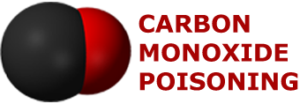FAQ: What is the difference between carbon monoxide levels in the exhaust and carbon monoxide levels in the ambient air?
Short Answer: Levels in the exhaust become dangerous when they are allowed to escape into the indoor air. A properly operating vent system should vent all exhaust to the outdoors.

What’s the difference between carbon monoxide in the exhaust and carbon monoxide in ambient air? CO levels in the exhaust of the appliance shouldn’t directly cause health risks, because exhaust is meant to be vented outside. Here an old and dirty furnace was measured to have 9,152 ppm in the exhaust. If even a fraction of that excaped into the breathing space of that apartment, people would be poisoned. The photo on the right is what an indoor meter should read, zero.
Gordon Johnson: Now let’s ask that question. What’s the difference between carbon monoxide in the exhaust and carbon monoxide in ambient air? And why do we care?
Griff Winthrop: Well, we care because a good technician who is testing a furnace or any other gas fired appliance in your home furnace or boiler is going to measure the carbon monoxide that is in the exhaust because the manufacturer will set what amount should be found if they measure it. There’s always a little bit in there, but it shouldn’t be a lot. And the manufacturer tells you if you’re if this appliance is furnace is running properly, you should only have 15 parts per million in the exhaust gas. Also, we hear this a lot. The flue gas. That’s the same thing as the exhaust gas.
Gordon Johnson: All right. So let’s talk about the principles with respect to this furnace. So what we had in this case was a really, really bad carbon monoxide situation, 10,000 parts per million in the exhaust kind of problem versus a thousand in the room. 1000 ppm in the air will kill you, but 10,000 in the exhaust is dangerous.
But in this case for years, this problem went on without anybody getting poisoned. What happens in these cases where especially where there’s too much fuel? As long as that exhaust is getting out of the house and nobody’s breathing it right by where it comes out of the house, as long as it’s getting out of the house, it isn’t dangerous. But it may not be deadly because people aren’t sitting in the on the roof inhaling the fumes. All right. But the problem is when you have high levels because you have way too much fuel, what happens is it badly corrodes the exhaust pipe like we saw in that case. And with you get that kind of corrosion inside of a pipe, you’re inevitably going to have leaks in it. And as soon as you create a leak in a pipe, you’re going to wind up with poisoning.
Griff Winthrop: Right? That’s the second failure, how it escapes the exhaust.
